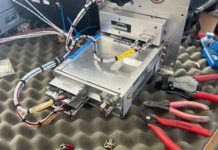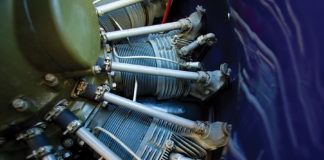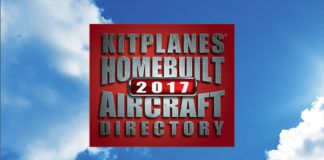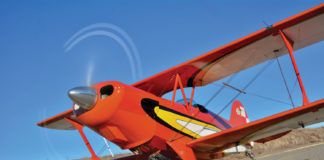AEA Advises FAA: Evolution Not Revolution on ADS-B
The Aircraft Electronics Association commented recently on a Notice of Proposed Rulemaking (NPRM) regarding ADS-B, or Automatic Dependent Surveillance-Broadcast technology. (ADS-B employs Mode S transponders and universal access transceivers to manage datalink-equipped aircraft, potentially improving use of airspace and overall safety.) While the AEA supports the requirement to adopt ADS-B, it does not support the FAAs proposed regulation, because the proposal doesn’t include the total cost of Next Gen requirements, will cause the industry an excessive financial burden and will compromise safety claims. Further, AEA members will be unable to manufacture, install or service equipment with assurance that it will be viable for the duration of the equipments life, AEA says.
Whats worrisome in the NPRM, according to AEA, is the FAAs “Vision of the Future,” which defines the Next Gen system as one that is “flexible enough to accommodate safely whatever number, type and mix of aircraft there will be in the U.S. skies by 2025.” Described as an “aircraft-centric system with performance-based requirements,” the future system will detail performance for communication, navigation and surveillance (CNS). The problem with that, as the AEA sees it, is that the ADS-B proposal is only the first element in broad changes to the CNS requirements for flying in U.S. airspace. AEA says that it is inappropriate for the FAA to propose sweeping changes, and then perform an economic analysis on only one element of a complete revamping of CNS requirements for Next Gen systems.
Per the FAAs statements, AEA concludes that aircraft-centric requirements for Next Gen will be required in less than 17 years, and a complete new suite of avionics will be required only five years after the ADS-B proposal. While the FAA will publish the performance requirements of the equipment, it will not require that the equipment be FAA-approved.
Furthermore, AEA says the FAA is estimating the cost of equipment and installation for equipment that does not yet exist. For example, the FAA estimates that it will take one week for each installation of new equipment in GA light aircraft. With roughly 800 certified repair stations to work on about 160,000 light aircraft, each station could process an estimated 50 aircraft per year, or about 40,000 aircraft total per year, which would mean four years of constant production just to meet the implementation deadline. However, the TSOd equipment doesn’t exist today, and installations cannot begin until it does, which could take five years or more. With an FAA deadline of January 1, 2020, 12 years hence, that would leave only seven years to equip the entire fleet.
AEA advocates adopting a proposal that uses existing avionics as much as possible rather than requiring wholesale replacement of equipment. The FAA proposal, AEA says, does not build upon the investment of thousands of owners of first generation ADS-B equipment. The proposed requirements make that equipment obsolete, says AEA.
For further information, visit www.aea.net. A direct link can be found at www.kitplanes.com/.
EVOLUTION CONDUCTS FIRST FLIGHTS
At press time in early April, Lancair International, Inc. announced that the latest addition to its line of high-performance aircraft kits, the Evolution turbine, had completed its fourth flight. The Evolution is the result of 3.5 years of engineering, research and development to produce a spacious aircraft that will meet the flight handling characteristics required by FAA Part 23, including a 61-knot stall speed. It provides a new level of safety by providing a BRS parachute system, energy absorbing seats, and AmSafe Aviation airbag seat belts.
Powered by the Pratt & Whitney PT6A-135A, which produces true airspeeds in excess of 385 mph when coupled with the Hartzell four-blade propeller, the Evolution consumes only 39 gph of Jet A, the company says. The Evolution prototype has a current empty weight of 2130 pounds, and an estimated completed flying weight of 2300 pounds with paint and interior.
The aircraft can carry 146 gallons of Jet A, and still have a 1000-pound payload after full fuel. It is available with either a Chelton SV Pro 6 or Garmin G900X EFIS-equipped instrument panel provided by Lancair Avionics.
For more information, visit www.lancair.com or call 541/923-2244. A direct link can be found at www.kitplanes.com. There is also a video of the first flight at www.kitplanes.com/blog.
ARLINGTON FLY-IN/EAA SIGN SPONSOR AGREEMENT
Under the agreement, EAA will provide extensive promotion and coverage of the fly-in, and also serve as a major sponsor of forums and workshops during the event.
The two organizations had operated under an informal agreement over the past 20 years, which did not define specific responsibilities and commitments. “This new agreement offers the Arlington Fly-In a new, higher level of support from EAA in areas that reflect our mutual goals,” says Barbara Tolbert, executive director of the fly-in.
As part of the agreement, Arlington will use the EAA Judging Standards in its aircraft awards program and will host two EAA SportAir workshops on the grounds at other times of the year. EAA will have a major presence at the event to provide member services, host forums and encourage members to volunteer at the event.
The Arlington Fly-In will be held July 9-13. For more information, visit www.arlingtonflyin.org. A direct link can be found at http://www.kitplanes.com/
GARMIN INTRODUCES GPSMAP 495
Garmin has introduced a new model to its portable GPS lineup, the GPSMAP 495. While rumors have been circulating for some time that a successor to the popular 496 was about to be released-with the most common belief that it would have a different form factor than the-96 series and a touch screen-the 495 is more of an addition to the middle of the line rather than an expansion upward.
Think of the 495 as a 496 without the XM WX onboard weather and music, or a souped-up GPSMAP 296. As with the 496 (the two models look virtually identical), the new model has a faster processor than the 196/296/396 models, SafeTaxi maps, and AOPA airports and facilities directories. Extensive land-side mapping, including points of interest, is optional; this is a standard feature of the 496. The new 495 also shares the brighter screen of the 496 and the high-resolution terrain database.
Why a 495 now? Perhaps because many pilots purchased the 496 but never activated the XM-fed weather features. The 495 gives them the major GPS and mapping features at a substantial savings. Moreover, the 495 is not a stepping-stone GPS. It cannot be updated to work with the GXM-30A XM antenna.
The list price is $1595; current street price for the 496 is $2395, not including the monthly XM subscription of $29.99 or $49.99. The 495 comes with the same accessory kit as the 496, including power cables, computer USB cord, yoke mount, AC adaptor and corded, low-profile GPS antenna in addition to a unit-mounted “stick” antenna.
For more information, call 800/800-1020 or visit www.garmin.com. A direct link can be found at www.kitplanes.com.
OVERHEAD LIGHTING CONSOLE
Aircrafters of Watsonville, California, is now the exclusive distributor for a new, lightweight, multipurpose overhead lighting console designed and manufactured by Pegasus Aeromarine, Inc. of Port Townsend, Washington. The console is suited for either forward or rear overhead lighting. Made of gelcoated fiberglass and weighing only 2.4 ounces, it has multiple facets to allow various configurations to fit rocker switches and either mini-eyeball lights or swiveling map lights (such as the Stein Air LED map light) for directional illumination. A Hella LED dome light may also be fitted and can house a 90 connector for a roof antenna. The photo shows swiveling eyeball lights with a dome light and three rocker switches.
The price is $149.95. For more information, call 831/722-9141, or visit www.aircraftersllc.com/products.htm. Contact Pegasus Aeromarine at 360/379-2484, or visit www.pegasusaeromarine.com. Direct links can be found at www.kitplanes.com.













